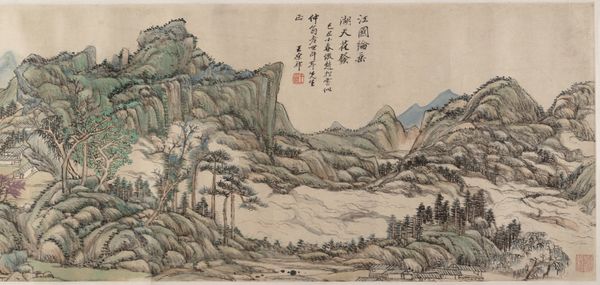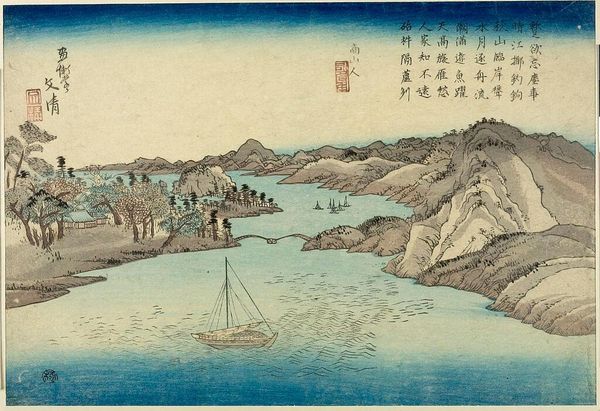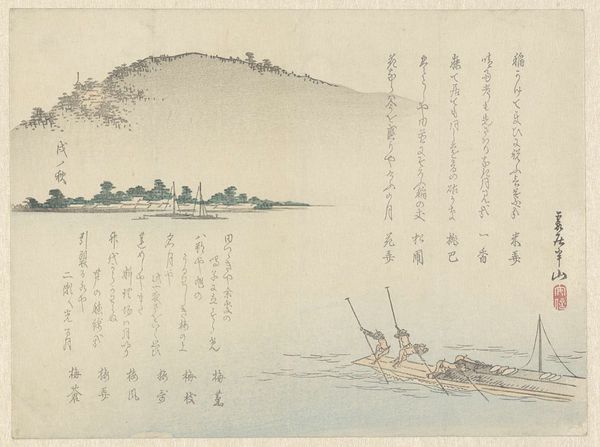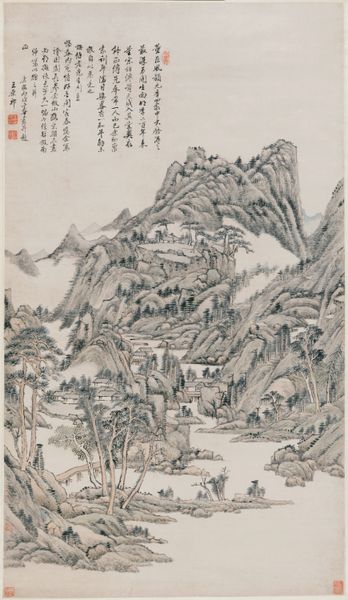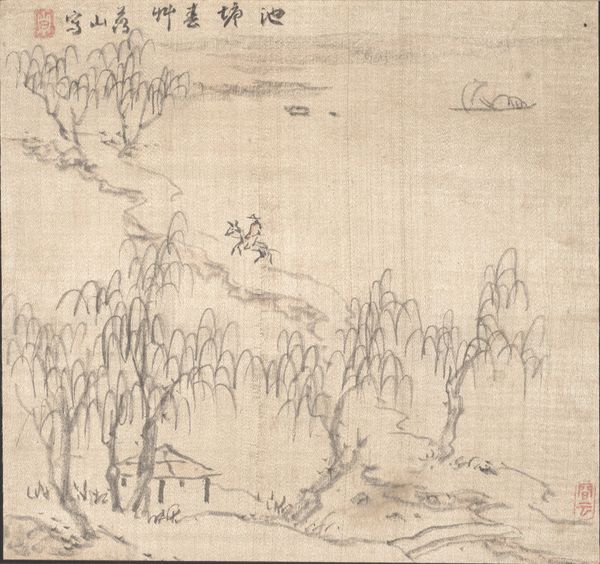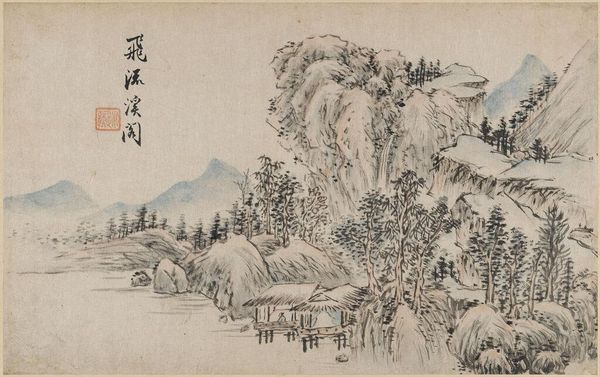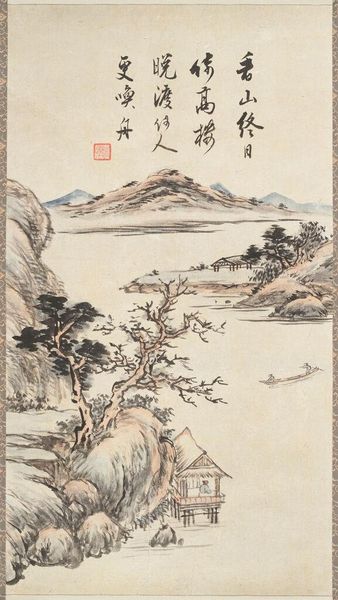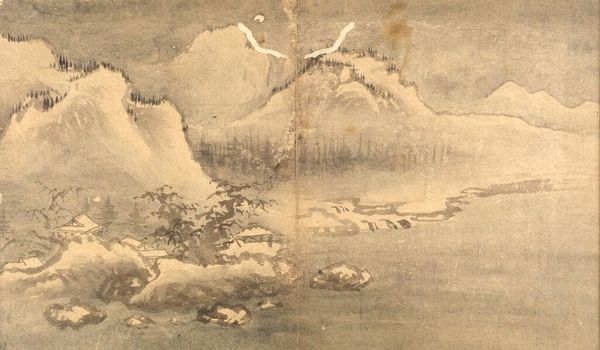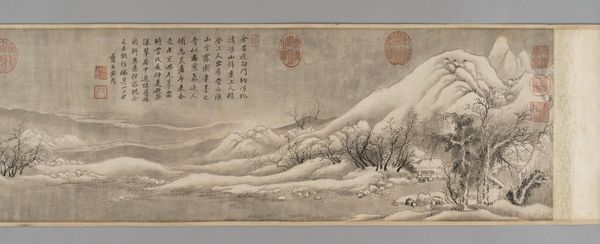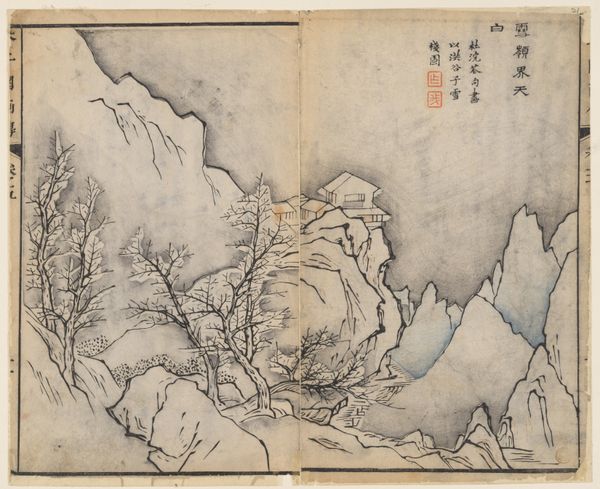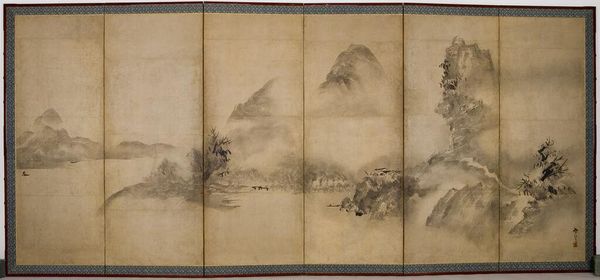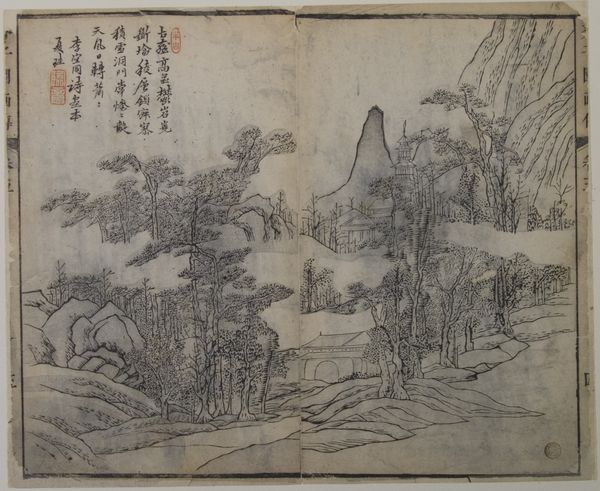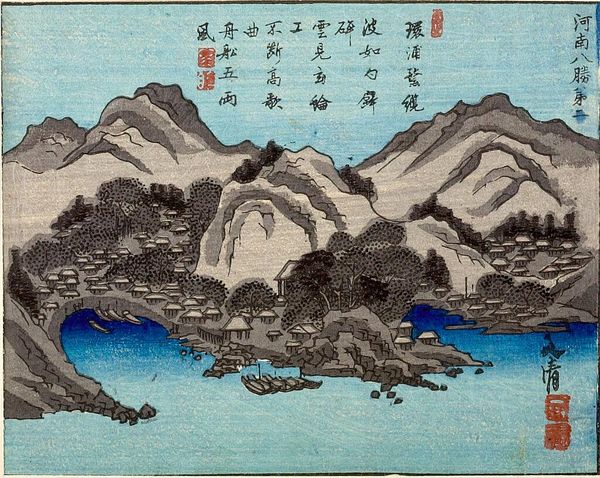
tempera, painting, paper, watercolor, ink
#
tempera
#
painting
#
asian-art
#
landscape
#
figuration
#
paper
#
oil painting
#
watercolor
#
ink
#
mountain
#
calligraphy
Dimensions: Image: 14 3/8 in. × 18 ft. 2 in. (36.5 × 553.7 cm) Overall with mounting: 14 3/4 in. × 27 ft. 1 in. (37.5 × 825.5 cm)
Copyright: Public Domain
Curator: Looking at Huang Xiangjian's "Searching for My Parents," painted around 1656, I immediately feel a profound sense of solitude. The muted tones and the vast, empty landscape evoke a deep yearning, almost melancholic in spirit. What is your first impression? Editor: Well, besides feeling like I'm looking at a scene from a dream, the landscape dominates completely. Tiny figures and boats almost vanish beneath towering mountains, creating a real feeling of humanity swallowed by the natural world. It’s that typical literati painting technique of self-effacement, isn't it? Curator: Exactly. Huang paints with ink and color on paper to portray a Confucian ideal—humility before the grandeur of nature and ancestral history. It serves both spiritual solace and philosophical depth in one stroke, no? The landscape's immensity diminishes any sign of individuality. I think there's an echo in there somewhere. What do you make of the location in the Met, particularly in their Asian Art section? Editor: The museum places the piece beautifully by displaying it near related pieces from its time, encouraging comparative insights on art and sociopolitical dynamics in 17th-century China, don't you think? Huang painted during a tumultuous transitional period from Ming to Qing dynasty, imbuing landscapes with personal feelings. The museum’s Asian Art section situates Huang and other artists against the backdrop of significant societal transformation—this is where art gains more depth. Curator: True. One could say "Searching for My Parents" is his personal manifesto, that Huang wasn't merely copying forms but feeling them, channeling emotional undercurrents related to displacement and familial longing with a subtle application of light and dark wash effects. That makes the work feel intimate. Editor: And accessible, in a way, though rooted deeply in literati tradition and Neo-Confucian values; placing these sorts of paintings in collections shows us the importance that tradition can play for contemporary values too. It keeps dialogues open in how artworks are made but most importantly, in how artworks mean. Curator: What else could art even mean! Reflecting, it’s almost heart wrenching to note that so much delicate sadness and hope are enmeshed into those distant blue mountains. A reminder that art helps us to reach for universal emotions of love, memory, and perseverance despite personal loss and historical change. Editor: Indeed. Next time I’m pining after something from long ago, maybe a lost love or ancestral history, this painting should come to mind. There are worse reminders.
Comments
No comments
Be the first to comment and join the conversation on the ultimate creative platform.
